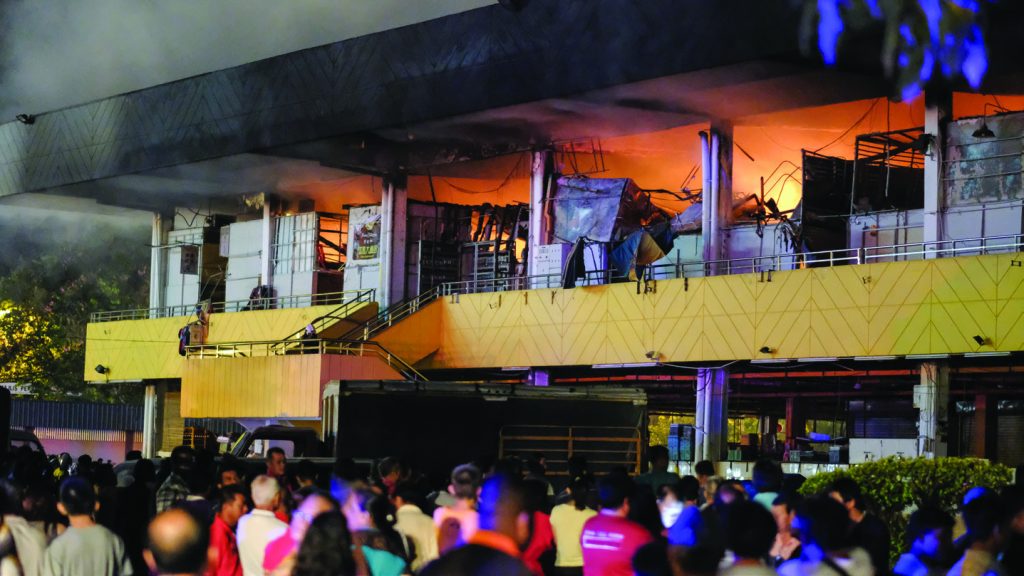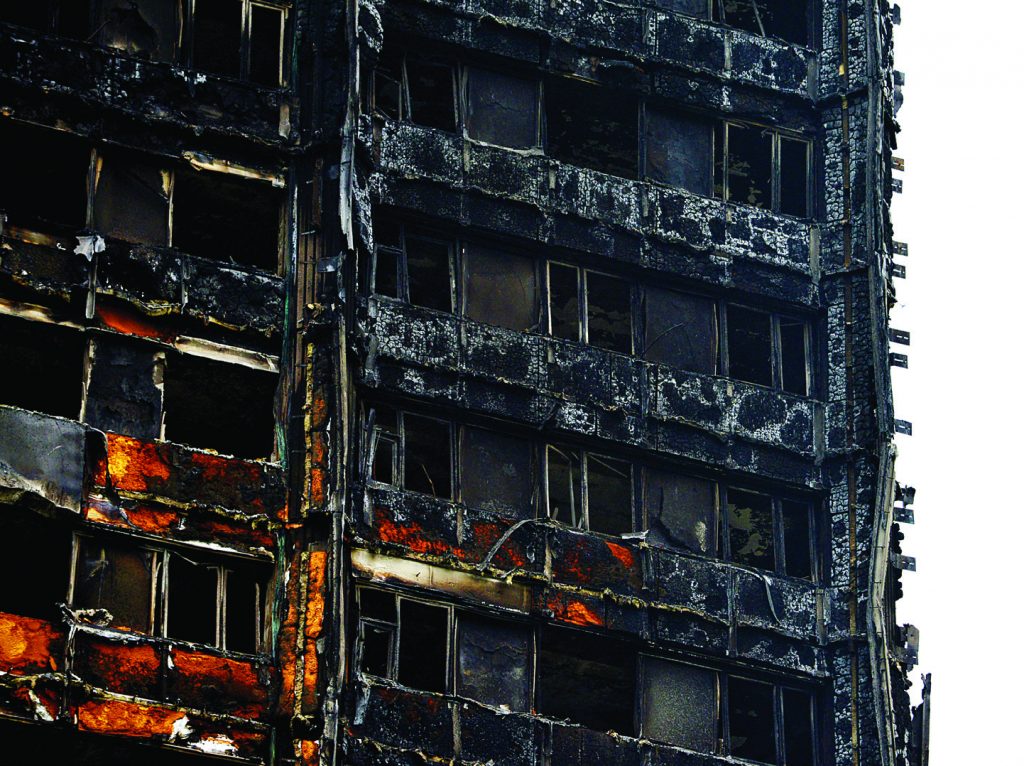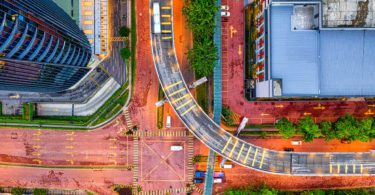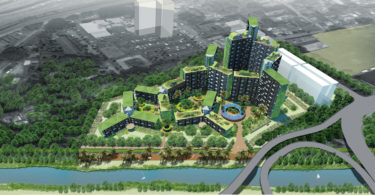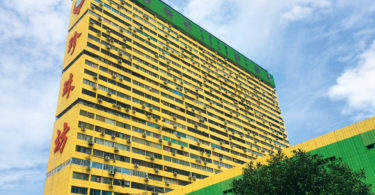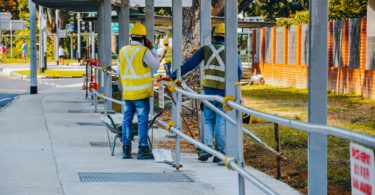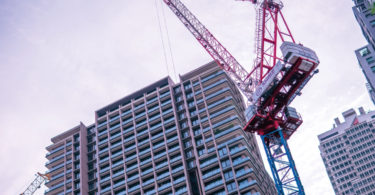In the early morning of 14 June 2017, while most people were still sleeping, an unfortunate freezer fire near an apartment window ignited the façade. The presence of air gap and the polyethylene insulated layers in the façade caused the fire to spread upwards rapidly and wrap around the building in a short period of time, resulting in 71 casualties.
Other factors that contributed to this disaster included design, selection of building materials, as well as lack of fire safety measures. Grenfell Tower had a single staircase design, which is not allowed in many countries. Despite its recent refurbishment, there were no pressurisation of the lift lobby, fire protection system or automatic sprinkler system.
This could be due to structure load restrictions, space limitation or any other reasons unknown at this juncture until the British government completes its investigation.
The Grenfell Tower disaster is a lesson in not compromising or taking fire safety for granted. It is not a question of when a fire incident is going to happen, or whether it will happen at all, but rather whether our buildings are equipped with appropriate fire safety measures that can cope with any major fires and avoid property damage and casualties.
The underlying issue for fire safety has always been that it is a mandatory legislative requirement with no return on investment. Hence, many building owners resort to providing minimum fire protection systems just to satisfy building regulations instead of fully understanding fire risks and hazards.
NEW MATERIALS, HIDDEN DANGERS
For developing or developed countries, there has been a transition within the construction industry through the decades, from pre-war buildings with no proper fire protection to ultra-modern high-rise buildings, with its own share of fire risks and hazards.
Old public buildings, such as hospitals, residential quarters, old shop lots and places of worship, were built using a mixture of masonry/brick and timber— they are solid in nature, yet some of the flooring, partitions and staircases are combustible.
Modern buildings, on the other hand, have replaced timber with innovative building systems, many of which are synthetic materials. Some of these products are lightweight, low cost and have good insulation properties (to prevent heat transfer), but some are also highly combustible and produce toxic gases when burnt.
That is why external fire incidents for high-rise buildings due to combustible façade cladding have become so rampant in the past few years across the globe. Apart from Grenfell Tower, other major fire incidences include a high-rise apartment in Shanghai; Melbourne’s Lacrosse building; a city apartment in Baku, Azerbaijan; and The Torch Tower super high-rise premium condominium and The Address hotel in Dubai.
Conventional cladding made of non-combustible materials, such as rock wool or glass wool, were the norm until decades ago, when alternative synthetic materials, such as polyethylene, were allowed to be used.
These materials are said to have passed the limited combustibility test requirements, but the problem may lie in relaxed regulations or unsuitable laboratory test methods. For example, to pass the test, façade cladding used on ceilings or externally only needs to be Class O rated. But Class O fire rating is just an index indicating the degree of surface flame spread, that is, to determine that the flame burning on the surface of the building material is slow spreading and does not exceed a certain limit in distance.
These tests may not reflect what actually happens during a fire—the outer aluminium sheets could fall away, exposing the combustible polyethylene insulated layer within, causing rapid vertical and horizontal fire spread.
Many buildings around the world use polyethylene or its equivalent for façade cladding as it provides excellent insulation and is economical, lightweight and easy to install. In countries where the ambient temperature is high, it saves air-conditioning costs, while in cold countries, it cuts heating bills. The efficient insulation property of polyethylene fulfils energy-saving fundamentals and may even be termed as ‘green’. But fire safety must be incorporated into the energy-efficient movement; after all, any fire incident would greatly increase carbon footprint.
In Malaysia, some of the buildings may have used similar types of façade cladding systems, although the combustible insulation layers may not have thefuel load to have the same fire impact as Grenfell Tower. But again, it all depends on system design and the way the façade cladding is mounted. Building owners should engage a fire engineering consultant to check their cladding systems to ensure they do not pose a fire risk.
LAWS AND LIMITATIONS
In Malaysia’s construction industry, we have well structured fire safety regulations and legislations that adopt a fire safety approach for different building occupancy risks, in terms of structure requirements, active and passive fire protection concept/design, as well as means of escape requirements.
Malaysia also has professional architects and engineers who are responsible for building fire safety designs, which include fire protection systems, compartmentation, evacuation route design, smoke control and management systems, etc.
Moreover, the Fire and Rescue Department Malaysia (FRDM) is the enforcing authority to ensure all submitted building plans fulfil the life and fire safety requirements of the Uniform Building By-laws (UBBL 1984) (Amendment 2012). FRDM also approves fire protection systems/products/equipment, once they have undergone and passed tests stipulated by respective Malaysian and international standards, before they can enter the market.
A major portion of UBBL 1984 is life-safety oriented, with fire safety concepts well spelled out in a prescriptive manner. Buildings in Malaysia, if designed to the requirements stipulated by UBBL 1984, are ensured of fire protection to a certain degree, with potential threats minimised. Being a prescriptive building regulation, the UBBL 1984 does have its shortfalls. It is based on deem-to-satisfy principle. And just like most other building regulations, it was established decades ago when construction was not that advanced. Today, with the trend of mega-sized, multi-occupancy, city-in-city complexes and super high-rise structures, the degree of fire hazards and fire risks has greatly increased.
Though the Malaysian UBBL was reviewed in 2012, the changes were more cosmetic in nature. To cater for modern-day fire safety, our UBBL should be reviewed and revamped to incorporate fire safety engineering fundamentals, with human life safety as a main objective, as well as functional designs of fire protection systems and mitigation of fire risks.
Performance-based design should be part of building design requirements. This approach to fire safety design relies on the use of fire engineering principles, calculations and appropriate software modelling tools to satisfy the intentions of the fire code. This can be used for the identification of probable and potential fire sources and size; adoption of appropriate smoke control and management philosophy; incorporation of functional means of egress design and suitable compartmentation for egress routes; and determining appropriate means of fire detection and extinguishment.
With the complexities in modern construction industry, competent fire engineers should be involved in assisting building owners, architects and engineers in overall building planning and fire safety design from the preliminary stages.
While these check and cross-check processes help ensure fire safety requirements are adhered to, fire safety design is only part of the story. During construction, site quality control through supervision and proper installation of fire protection systems are crucial to ensure system functionality.
Enforcement is another challenge, to ensure all buildings have building approvals. In the wake of several fires at tahfiz (Islamic religious) centres, Urban Wellbeing, Housing and Local Government Minister Noh Omar revealed that only 80 out of 1,238 tahfiz centres national have building approval from the FRDM.
Many of the inherent factors that come with the progress of society are also outside the control of designers and builders. Environment factors and introduction of high fuel loads through innovative building systems and materials contribute to these risks. In the past, we assumed that fire risks only come from inside a building. Hence, external fire risks, such as highlight flammable façade claddings, were never greatly emphasised until recently.
MAINTAIN AND MITIGATE
For new buildings, the fire risk is normally minimal. But through the years, many fire hazards and risks are gradually added through renovations and interior design. At times, compartments are added to form rooms, compartment walls are taken down, fire doors are replaced with non-fire-rated doors for aesthetic value, highly combustible interior finishes are added, etc. All these are carried out after the building is completed and the Certificate of Completion and Compliance (CCC) issued, and there is no other law enforcing agency to monitor any deviation from the by-law requirements.
To cover this grey area, Malaysia has a Fire Services Act 1988 (Act 341), where designated building owners must apply for a fire certificate from the FRDM. This is a result of a deregulation exercise by the Ministry of Housing and Local Government.
By enacting the fire regulation within the Fire Services Act, the Malaysian government has transferred the responsibility of occupant safety to building owners of libraries, hospitals, hotels, hostels and factories with a certain built-up area, among others. These designated building owners will need to mitigate fire risks within their respective buildings and ensure all fire protection systems are in full operating condition. Having a fire certificate does not relieve owners from their responsibility, even after FRDM has conducted its ad-hoc inspection.
There have also been buildings with proper fire protection systems that have been burnt due to non-maintenance of these systems. Malaysia’s first sprinkler building, Campbell Complex, was gutted by fire decades ago. Subang International Airport’s fires, first at the duty-free area and then the control tower, are examples of incidences caused by accumulation of fire hazards and poor maintenance of fire protection systems.
In fact, many buildings in Malaysia are likened to ‘time bombs’ due to inadequate fire extinguishers, broken water sprinklers, blocked fire exits, faulty alarm systems, among others. From January to May 2017, the FRDM issued 1,688 fire hazard warnings and noted that at least 47 high-rise residential buildings nationwide, including 40 apartments and condominiums in the Klang Valley, are high-risk fire hazards.
In view of the fire hazards being introduced through time, building owners should conduct annual risk assessments, which go beyond normal fire audits against UBBL compliance. Only through a competent risk assessment by a qualified fire risk assessor can mitigation measures be taken. This does not mean that fire incidents will never happen, but building owners can be ready to cope and manage any possible outbreaks and minimise damages.
The primary objective of fire safety has shifted from post-fire strategies (fighting a fire after it breaks out) to pre-fire strategies (preventing or reducing a fire from occurring) for obvious reasons. Once a fire has occurred, even if it can be controlled or extinguished, damage has already been done. At times, the water damage may even supersede the fire/smoke damage. That is assuming there are no casualties. Hence, mitigation of fire hazards and fire risks surpass salvaging of fire incidents to prevent direct losses, consequential losses and loss of goodwill for companies and building owners.
CONCLUSION
To sum up, there are several actions needed to eradicate potential fire risks in Malaysia:
• Our UBBL 1984 and building regulations need to be reviewed and upgraded to be functional in design and not rely on deem-to-satisfy criteria;
• Professional designers need to be more pro-active in fire protection system design, more accurately specifying what is required for the specific building category instead of using a standard or outdated specification;
• Selection of manufacturer or supplier of systems/ products/equipment should be based on quality and appropriateness for application;
• Installation of these systems/products/equipment must also adhere to the manufacturer’s guidelines, with true system testing before commissioning to ensure functionality; and
• Proper maintenance of fire protection systems must be carried out to full operation conditions.
In each of the processes stated above, all individuals involved in the decision-making process should be competent, with the right fire safety knowledge and experience, in order to discharge their duties diligently and avert any potential disasters.

 Hong Kong
Hong Kong Singapore
Singapore Indonesia
Indonesia Tiếng Việt
Tiếng Việt ประเทศไทย
ประเทศไทย

